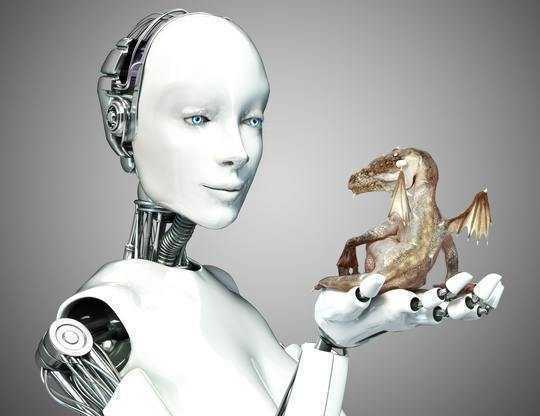 Surviving an extinction-level event requires adapting to a new environment. Shutterstock
Surviving an extinction-level event requires adapting to a new environment. Shutterstock
The ancestors of modern birds were the sole survivors of one of the most severe mass extinction events in the history of the world. Today, 10,000 known bird species exist, all of them the descendants of dinosaurs. Polar adaptations, seed-based diets and even nest designs may have played roles in determining who lived and who died.
In the fourth industrial revolution era, enterprises and human workers are equally at risk of becoming extinct. This time, being proactive is essential and adaptability is the answer.
Stemming from my work on transforming passive bystanders into agents of change, I propose that understanding one’s own behaviours is key to adapting in the AI era.
Adapting to an AI Era
The artificial intelligence (AI) revolution has started. The technology is maturing very rapidly. The question is no longer whether we use the technologies or not, but rather how to better collaborate with them.
Ambient technologies, such as Siri, Alexa or Cortana, are integrating seamlessly in our interactions. We walk into a room and interact with them to turn on the light, play a song, change the room temperature, keep track of a shopping list, book a ride to the airport or be reminded to take the right medication at the right time.
And this is only the beginning.
Emotion AI works on teaching robots how to feel empathy. Google AI stories are about how AI is helping people solve problems. Experts race to predict how we will be living with AI in the near future.
More-than-human work
Disruptive technologies are advancing, demographics are shifting, customers are gaining power and the gig economy and global talent markets are rising. This is shaping the future of work in all fields including education, cybersecurity, delivery, coaching, management, marketing and sales, health care, music and agriculture.
Human+ workers are individuals who work alongside machines to reach collaborative intelligence. They consolidate their individual knowledge, skills and experience with a set of tech-driven capabilities to enhance their performance.
Adaptability training
“Adapt or die” is a business mantra, and the adaptability of a workplace’s employees is their key to the future where many of the tasks cannot be imagined yet.
The next generation of employees will need to be trained as humans+ before they enter the job market, and the existing workforce will require continuous reskilling and upskilling.
Little has been done to reimagine the training and reskilling needed for the future workplace. This said, similar to creativity (another in-demand soft skill) there is more to adaptability than meets the eye.
Organizations and the future of work (Singularity University):
{youtube}_wjx4GPRvcI{/youtube}
Adaptability is the capacity to adjust to new conditions and to thrive in new environments.
To adapt is a performance that goes beyond knowledge and skills. It requires an attitudinal change that will only happen if we revise our constructs, consider new perspectives and start to perceive technology as augmenting our own capabilities instead of replacing them.
Human vs. machine
Many associate AI with science fiction stories such as the Terminator franchise or Isaac Asimov’s Robot series, where technology’s prime goal is to control or even exterminate human existence.
Others are influenced by worldwide experts who relentlessly warn against AI and technological domination. Tesla founder Elon Musk has said on several occasions that AI is more dangerous than nuclear weapons and that it can become an immortal dictator.
Technology has eliminated jobs in the past and will eliminate others in the near future.
New jobs will require the current workforce to commit to lifelong learning.
Besides, AI’s ethical problems are yet to be addressed, and establishing an AI code of ethics is complicated. Since its inception in 2017, 1,130 citizens and 28 organizations have signed the Montréal Declaration for a Responsible Development of Artificial Intelligence, a commitment to the socially responsible development and implementation of AI that serves and benefits society.
Empathetic evolution
So can dinosaurs adapt? I say they can, but it will take an empathetic village.
Enterprises that expect their workforce to be ready for the future of work must learn fast. They must adopt a proactive mindset and support their employees in their quest to belong to the future workplace. Mostly, they need to understand where resistance to change comes from in order to address it.
How can organizations prepare for the future of work?:
{youtube}fUQqPMNCPjM{/youtube}
At the same time, enterprises need to close the digital divide between themselves and their workforces. Most importantly, they need to find ways to keep their people employed. The fear of being replaced can reinforce human dinosaurs’ unwillingness to change.
Team dynamics should function in an empathetic way to facilitate human/human and human/machine collaborations and to support individual members in their adaptation process.
On an individual level, we need to develop our mental and emotional capacity and our knowledge and skills to embrace the human+ identity and attitude. And last, we need to want to adapt, which requires a change in how we view the world. Once we identify, analyze and address the core of our resistance to change, we can move to strategies to equip and empower us to deal with uncertainties and actively experiment with new possibilities.
To adapt, training to develop knowledge and skills are necessary but will not be enough. An empathetic and supportive environment and learning about oneself are also important.![]()
About The Author
Nadia Naffi, Assistant Professor in the Department of Education (Educational Technology), Concordia University
This article is republished from The Conversation under a Creative Commons license. Read the original article.
Related Books
at InnerSelf Market and Amazon


























